Came for the music, returned for the theatre. I oversimplify: Riccardo Muti’s Roads of Friendship events, meetings of his Luigi Cherubini Youth Orchestra with players from other places – since 1997, they have included Sarajevo, Lebanon, Kenya, Iran and this year Jordan – will always be the big cornerstones of the Ravenna Festival.
Yet since I joined Teatro delle Albe’s big collaborations with local citizens in 2019’s Purgatorio, second instalment of their Dante Divina Commedia triptych finally completed, after Covid interruptions, last year, this unique, highest level dramatic experience has become an essential date in the calendar.
You could argue that Don Quixote’s quest for the numinous – Cervantes’ novel, one to be re-read every 10 years in/among my books, is the basis for these amazing Thespians’ latest triptych – links with this year’s festival theme, “Invisible Cities”, homaging the centenary of Italo Calvino’s birth. But doesn’t all great art? Based in a city threatened, like Venice, with immersion – this spring’s flood waters stopped nearly at the gates – and concealing paradises behind ordinary brick walls, every performance at the wide-ranging can reinforce that sense of the limitless. All three main events which I attended absolutely did. 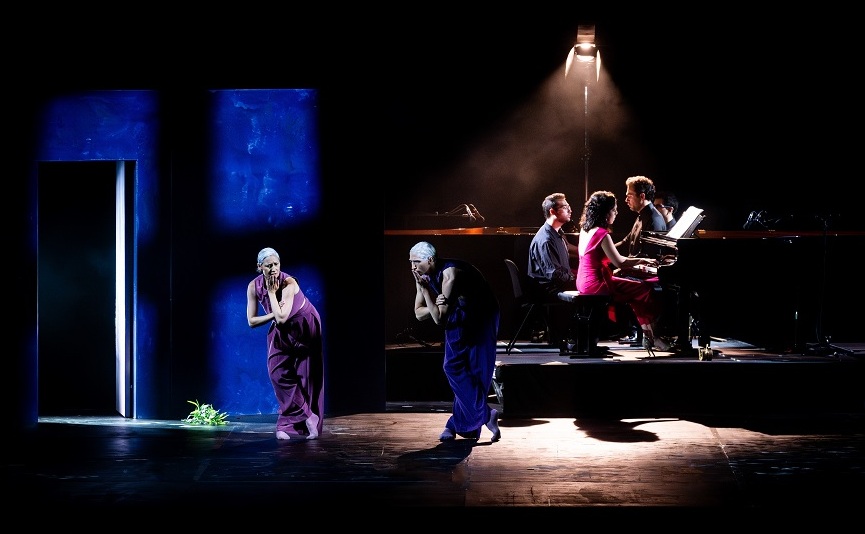
A solo Rachmaninov recital might not be worth the travel, but this “Evening of Music and Dance” for the 150th anniversary certainly was. The dance element could have been a risk, and started with Uwe Scholz’s relatively conventional Pas de deux to the Andante of Rachmaninov’s Cello Sonata as played by the Rana sisters (Ludovica is a cellist, and it was hard to gauge the real quality of her tone given the first of many problems with amplification under the dome of the vast Palazzo Mauro de André). 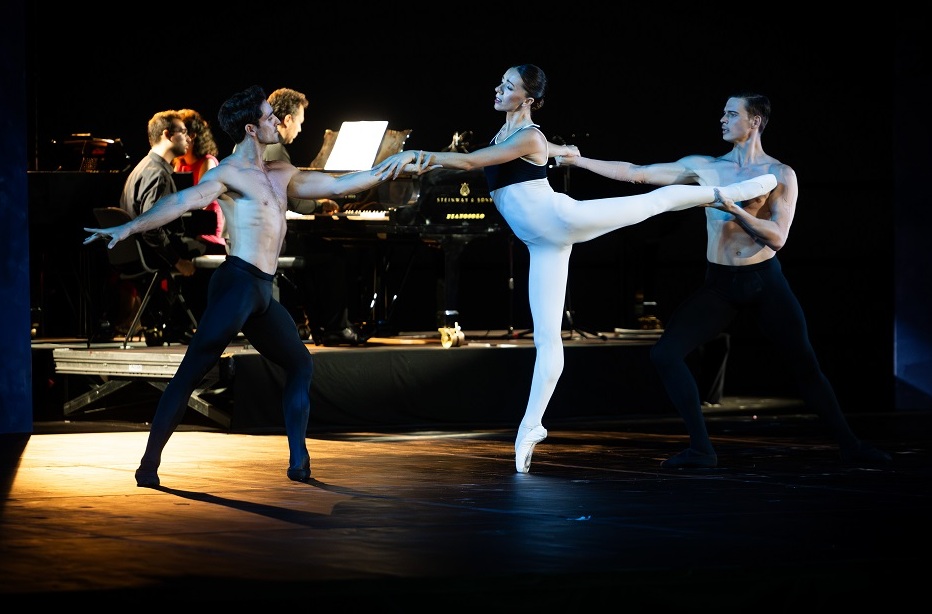 The second choreography by Scholz – he died far too young in 2004 – was much more original. In this, Italian Rachele Buriassi and Cuban Esnel Ramos of Les Grands Ballets Canadiens were joined by Kyiv Opera House’s Oleksii Potiomkin in wiry, acrobatic-poetic interweavings to the Andantino from the Second Suite for Two Pianos (pictured above), Massimo Spada now joining Beatrice Rana. Their biggest challenge, surmounted with fleet brilliance, was the composer’s two-piano version of his last major masterpiece, the Symphonic Dances. Here inventiveness took a further step in chameleonic choregraphy from the superlative team of Simone Repele and Sasha Riva, also dancing in the 10-strong ensemble. Anna Biagotti’s costumes helped with the gender melt here; a colleague thought it was all too much indebted to Balanchine, but the vocabulary of Repele and Riva goes even further.
The second choreography by Scholz – he died far too young in 2004 – was much more original. In this, Italian Rachele Buriassi and Cuban Esnel Ramos of Les Grands Ballets Canadiens were joined by Kyiv Opera House’s Oleksii Potiomkin in wiry, acrobatic-poetic interweavings to the Andantino from the Second Suite for Two Pianos (pictured above), Massimo Spada now joining Beatrice Rana. Their biggest challenge, surmounted with fleet brilliance, was the composer’s two-piano version of his last major masterpiece, the Symphonic Dances. Here inventiveness took a further step in chameleonic choregraphy from the superlative team of Simone Repele and Sasha Riva, also dancing in the 10-strong ensemble. Anna Biagotti’s costumes helped with the gender melt here; a colleague thought it was all too much indebted to Balanchine, but the vocabulary of Repele and Riva goes even further.
Some sequences were counter-intuitive: reprises relatively immobile or pared-down compared to the original wild patternings, shouts, stamps, playfulness with giant hands in the eerie central waltz – suggestive of Rachmaninov’s own eleven-note spreads? – not overdone. And the cumulative power of the final “midnight” sequence showed in the dancing as well as the playing. Fokine might have choreographed the composer’s work, along with the Paganini Rhapsody; I think he would have been impressed by this. The two youngish choreographers have worked with director Damiano Michieletto on Bernstein’s Mass in Rome’s Baths of Caracalla; I’d like to see more of that collaboration. 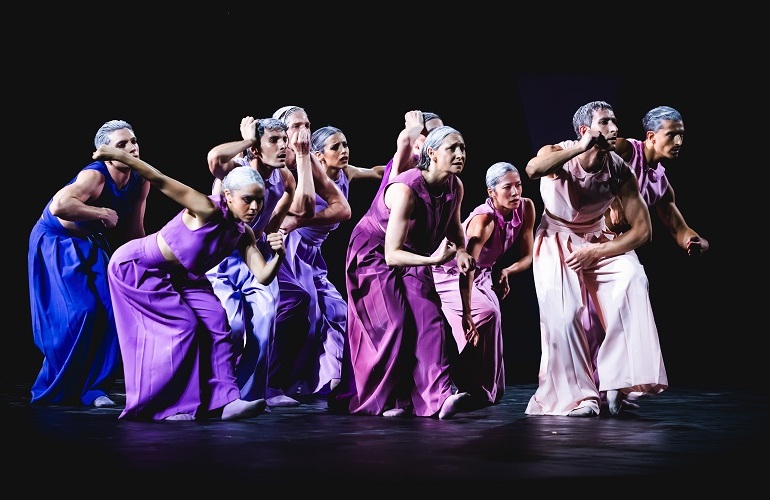
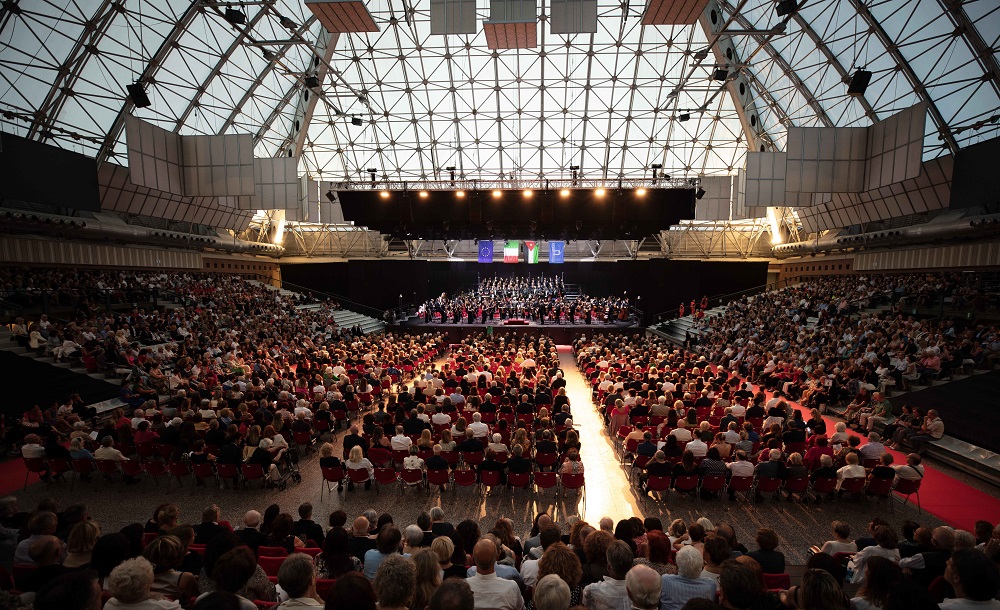 Muti’s programme was rich and strange, with a preponderance of slow music, all of it aspiring heavenwards even if we began in Hades with the Furies and Spectres of Gluck’s Orfeo ed Euridice Act Two. The conductor’s view is marmoreal rather than blazing, chorus likewise, but there was full physical involvement from countertenor Filippo Mineccia. Just one oddity: if you’re only going to perform an act, why be purist about Gluck’s original version, which deprives us of the sublime flute solo in the new later central section of the “Dance of the Blessed Spirits”?
Muti’s programme was rich and strange, with a preponderance of slow music, all of it aspiring heavenwards even if we began in Hades with the Furies and Spectres of Gluck’s Orfeo ed Euridice Act Two. The conductor’s view is marmoreal rather than blazing, chorus likewise, but there was full physical involvement from countertenor Filippo Mineccia. Just one oddity: if you’re only going to perform an act, why be purist about Gluck’s original version, which deprives us of the sublime flute solo in the new later central section of the “Dance of the Blessed Spirits”?
That absence was all the more to be lamented when the flautist, Chiari Picchi, sang so beautifully at the start of Bellini’s “Casta diva”, supported ineffably by a master conductor of the bel canto repertoire. The Norma was a more than promising young soprano, Cuban-American Monica Conesa, but her Callas-like vibrancy in the middle register had an asperity surely due to the amplification, which later gave stand-out strings overdue prominence. 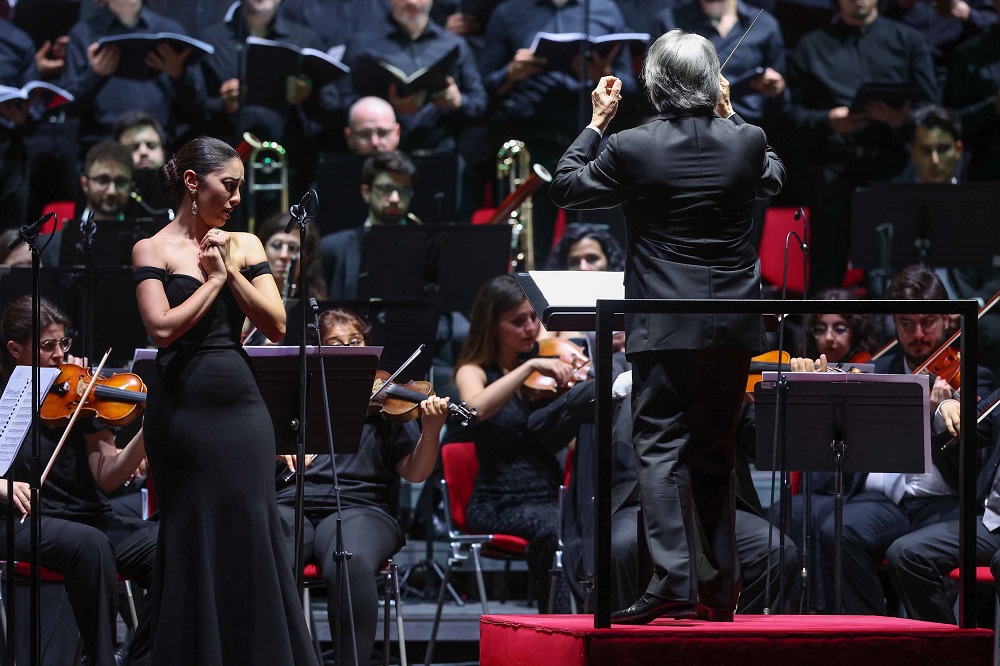 It was all necessary for the Jordanian-Syrian intermezzo, for which Muti took a back seat. Fit company for Gluck and Bellini was Dima Orsbo’s Ula-Ikal Mansiyouna ala difaf al furat, setting an ancient poem from an area between the Tigris and the Euphrates, with a simple descending passacaglia figure repeating beneath vocal and instrumental melismas. Both vocalists, Syrian-born and Italian-based countertenor Razek-François Bitar and Jordanian Zain Awad, soaring into the stratosphere but also going beneath her companion’s line, delivered the highest artistry. So too did Syrian Mirna Kassis and Jordanian Ady Naber, but their numbers were pop songs: fair enough in a musical interlude.
It was all necessary for the Jordanian-Syrian intermezzo, for which Muti took a back seat. Fit company for Gluck and Bellini was Dima Orsbo’s Ula-Ikal Mansiyouna ala difaf al furat, setting an ancient poem from an area between the Tigris and the Euphrates, with a simple descending passacaglia figure repeating beneath vocal and instrumental melismas. Both vocalists, Syrian-born and Italian-based countertenor Razek-François Bitar and Jordanian Zain Awad, soaring into the stratosphere but also going beneath her companion’s line, delivered the highest artistry. So too did Syrian Mirna Kassis and Jordanian Ady Naber, but their numbers were pop songs: fair enough in a musical interlude. 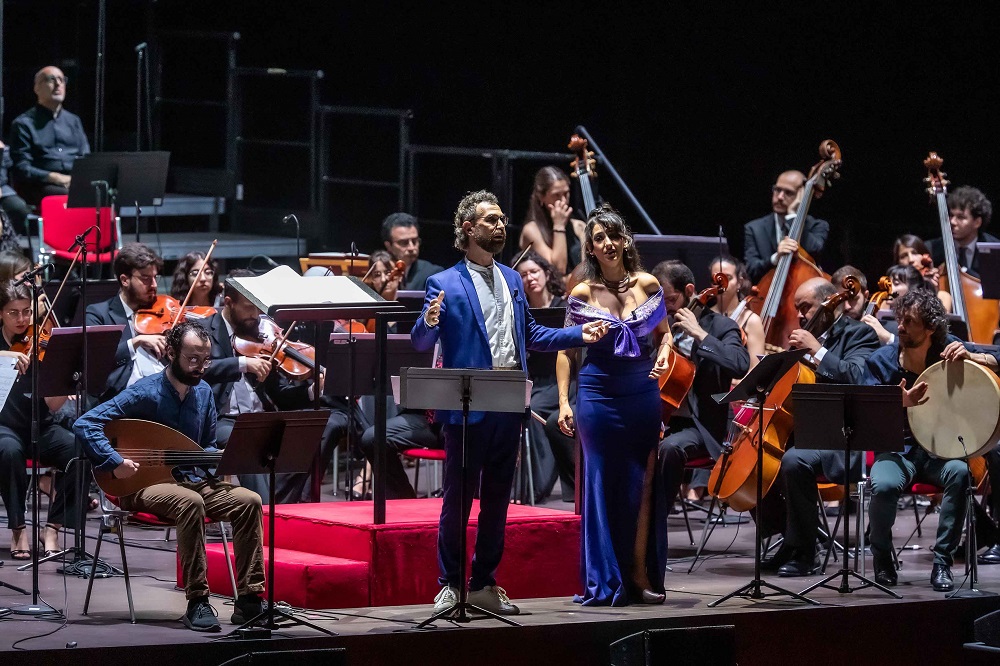 Muti, the Cremona choir and the mixed orchestra signed off with more deepest seriousness – Brahms’s Schicksalslied (Song of Destiny), a work I only knew from late, lamented Abbado’s recording and had never heard live before. Hölderlin's inspirational poem contrasts heavenly light with blind sufferings on earth below, ending pessimistically, but Brahms finally decided to reprise the luminous orchestral opening in a different key. Few living conductors can make it glow and float as Muti did: a perfect peace to end a supernaturally beautiful programme.
Muti, the Cremona choir and the mixed orchestra signed off with more deepest seriousness – Brahms’s Schicksalslied (Song of Destiny), a work I only knew from late, lamented Abbado’s recording and had never heard live before. Hölderlin's inspirational poem contrasts heavenly light with blind sufferings on earth below, ending pessimistically, but Brahms finally decided to reprise the luminous orchestral opening in a different key. Few living conductors can make it glow and float as Muti did: a perfect peace to end a supernaturally beautiful programme.
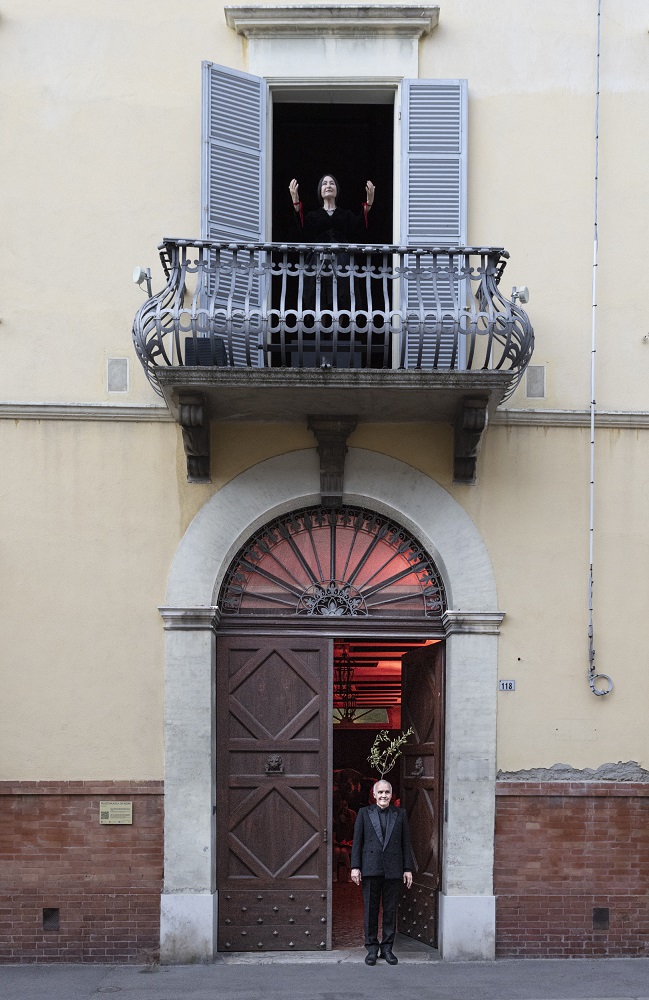
Ravenati working at sewing machines or writing out their dreams to give to us occupied the entrance hall, their activity punctuated by Sephardic-Andalusian and Calabiran songs from Serena Abrami; the 50 spectators sitting on benches were led in small groups to the different rooms of the palace, the Teatro dell’Albe’s Centre for Vocal studies opposite their converted-church theatre, which I’d been able to inspect last year.
What a visionary transformation – a sequence of surreal tableaux, or at least scenes surreally lit and “staged”, including a family around a table eating soup with knives, chickens present in a coop; girls building a sandcastle intermittently revealed in a “magic mirror; a mermaid in the attic (pictured below); a woman with a meat cleaver surrounded by stinking meat.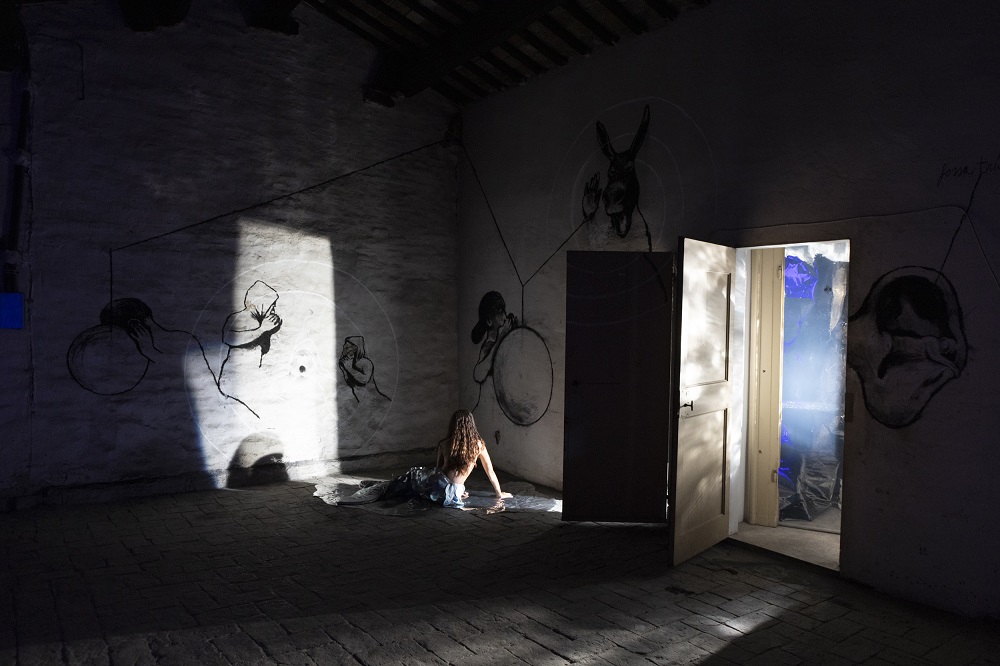
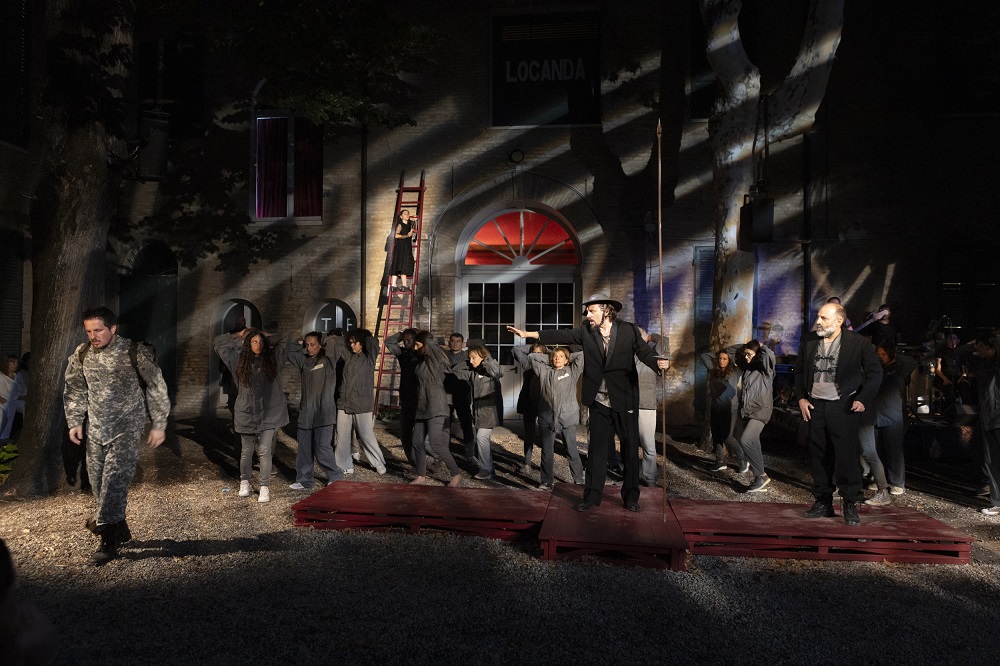
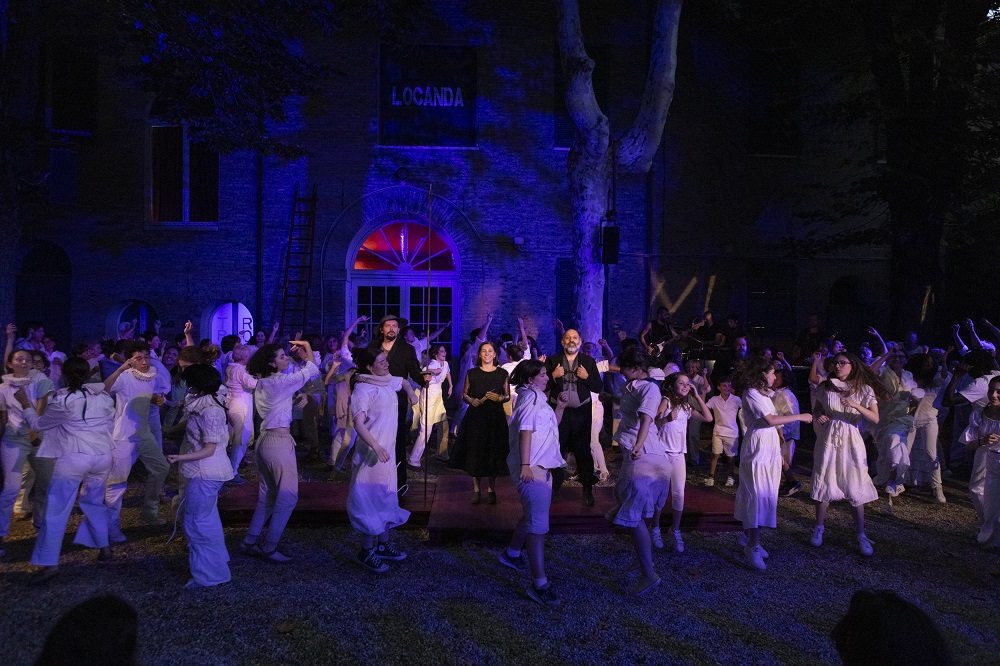















Add comment